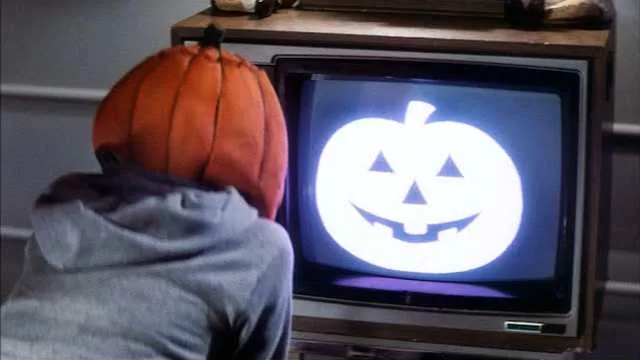After the Halloween franchise seemed to run out of steam with the lackluster Halloween II, John Carpenter decided to take a bold step. He wanted to explore new stories within the Halloween universe. This idea was inspired by the Celtic myth and the festival of Samhain, which had been hinted at in the first sequel.
Carpenter saw a chance to create fresh themes and narratives, and he secured a screenplay from the legendary writer Nigel Kneale. Kneale was in Los Angeles to work on a remake of The Creature from the Black Lagoon when Carpenter approached him.

However, Kneale’s original script underwent significant changes, reportedly at the request of producer Dino De Laurentiis. The final product was credited to director Tommy Lee Wallace, who had worked on Carpenter’s earlier films. Unfortunately, Halloween III: Season of the Witch was a financial disappointment. Critics and fans dismissed it for years, but it has since gained a cult following.
The Unique Concept of Halloween III
What makes Halloween III stand out is its original concept, which remains intriguing and dark. Kneale’s story shares themes with his earlier works, such as Quatermass II and The Stone Tape. These stories often feature sinister companies and ancient relics with hidden powers. Kneale also had a knack for satirizing organizations and philosophies, which aligned well with Carpenter’s vision.
In Halloween III, we meet Conal Cochran, played by Dan O’Herlihy, an Irish toy manufacturer. Cochran runs the Silver Shamrock factory in Santa Mira, California. This location is a nod to the classic film Invasion of the Body Snatchers. Cochran has flooded America with his popular Halloween masks, but there’s a sinister twist. His masks are not just toys; they are weapons designed to unleash chaos. They contain shavings from Stonehenge, which release deadly insects and snakes, leading to mass slaughter during Halloween.

A Flawed Yet Compelling Narrative
While the premise is clever, the execution of the story is uneven. The film takes time to explain Cochran’s plan, which sometimes feels more like a plot device than a genuine critique of holiday commercialization. The low budget and rushed production hinder the film’s overall quality. Cinematographer Dean Cundey tried to maintain a distinct look with heavy shadows and vibrant colors, but the result often felt cheap.
Despite its flaws, the film does create an unsettling atmosphere. It promises a story where the unexpected happens, including a plot that threatens mass infanticide. Fans of Carpenter’s work will appreciate seeing familiar faces, like Tom Atkins, who plays Dr. Dan Challis, and Nancy Loomis, who appears briefly as his bitter ex-wife.
The Plot Unfolds
The story begins with Dr. Challis treating an elderly man named Grimbridge (played by Al Berry). Grimbridge is terrified and warns Challis about a plot to “kill us all!” Before he can explain further, assassins attack him. One assassin brutally kills Grimbridge and then self-immolates, leaving no trace of human remains. This shocking event leads Challis and Grimbridge’s daughter, Ellie (played by Stacey Nelkin), to Santa Mira to uncover Cochran’s secrets.

Cochran’s character is chilling. He presents a charming facade to his retailers but reveals his true intentions with disturbing zeal. He fantasizes about the bloodshed that will accompany his Halloween plans, saying, “The hills ran red with blood!” This line encapsulates the film’s dark themes.
Building Tension
Despite some slow moments, the film builds tension effectively. The playful Silver Shamrock advertisements, featuring a catchy jingle, become increasingly sinister as the story progresses. The film’s final act ramps up the suspense, culminating in a classic horror trope: the hero tied to a chair.
Wallace’s direction, while lacking the finesse of Carpenter, does create some memorable scenes. The reveal of Cochran’s secret laboratory, filled with computers and ancient relics, is visually striking. However, the film misses opportunities to explore intriguing elements, such as the idea of an Irish pagan cult in Santa Mira.
A Mixed Reception
Many cheap horror films from this era have gained a following, but Halloween III faced harsh criticism. Its grim premise of child murder struck a nerve, especially during a time when urban myths about Halloween were prevalent. The film’s ambiguous ending left audiences wanting more resolution, which contributed to its negative reception.

Despite its shortcomings, Halloween III: Season of the Witch is not without merit. It offers a unique take on the horror genre, blending elements of satire and supernatural terror. The film’s dark themes and unsettling atmosphere make it a noteworthy entry in the Halloween franchise.
A Cult Classic Emerges
Over the years, Halloween III has found its place among horror enthusiasts. Its originality and willingness to explore darker themes have earned it a cult following. Fans appreciate its departure from the Michael Myers storyline, embracing the film’s unique narrative.
In conclusion, Halloween III: Season of the Witch is a fascinating film that deserves a second look. While it may not have achieved the success of its predecessors, its bold ideas and chilling atmosphere make it a hidden gem in the horror genre. As audiences continue to explore the depths of horror cinema, this film stands out as a reminder of the creativity and risks that can emerge from the genre.

